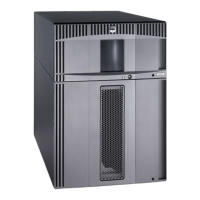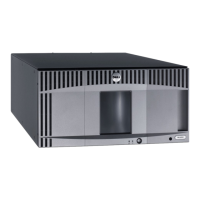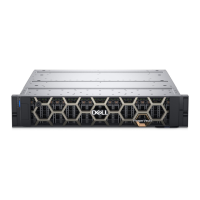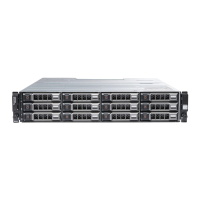• I/O may hang when a Device Mapper device is deleted before the volume is unmounted.
• If the scsi_dh_rdac module is not included in initrd, slower device discovery may be seen and the
syslog may become populated with buffer I/O error messages.
• I/O may hang if the host server or storage array is rebooted while I/O is active. All I/O to the storage array should
be stopped before shutting down or rebooting the host server or storage array.
• With an MD Series torage array, after a failed path is restored, failback does not occur automatically because
the driver cannot auto-detect devices without a forced rescan. Run the command rescan_dm_devs to force
a rescan of the host server. This restores the failed paths enabling failback to occur.
• Failback can be slow when the host system is experiencing heavy I/O. The problem is exacerbated if the host
server is also experiencing very high processor utilization.
• The Device Mapper Multipath service can be slow when the host system is experiencing heavy I/O. The problem
is exacerbated if the host server is also experiencing very high processor utilization.
• If the root disk is not blacklisted in the multipath.conf file, a multipathing node may be created for the root disk.
The command multipath –ll lists vendor/product ID, which can help identify this issue.
• If upgrading from a previous version of SLES, uninstall and then reinstall the latest scsi_dh_rdac module on
the updated SLES installation. Then update the kernel and install the MD Storage Manager from the DVD.
Troubleshooting
Question Answer
How can I check if multipathd is running? Run the following command.
/etc/init.d/multipathd status
Why does the multipath –ll command
output not show any devices?
First verify if the devices are discovered or not. The command #cat /
proc/scsi/scsi displays all the devices that are already discovered.
Then verify the
multipath.conf to ensure that it is been updated with
proper settings. After this, run multipath. Then run multipath –
ll, the new devices must show up.
Why is a newly-mapped LUN not assigned
a multipathing device node?
Run rescan_dm_devs in any directory. This should bring up the
devices.
I removed a LUN. But the multipathing
mapping is still available.
The multipathing device is still available after you remove the LUNs. Run
multipath –f <device node for the deleted LUN> to
remove the multipathing mapping. For example, if a device related
with /dev/dm-1 is deleted, you must run multipath –f /dev/dm-1
to remove /dev/dm-1 from DM mapping table. If multipathing daemon is
stopped/restarted, run multipath –F to flush out all stale mappings.
Failback does not happen as expected
with the array.
Sometimes the low level driver cannot auto-detect devices coming back
with the array. Run rescan_dm_devs to rescan host server SCSI bus
and re-aggregate devices at multipathing layer.
180
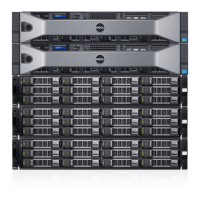
